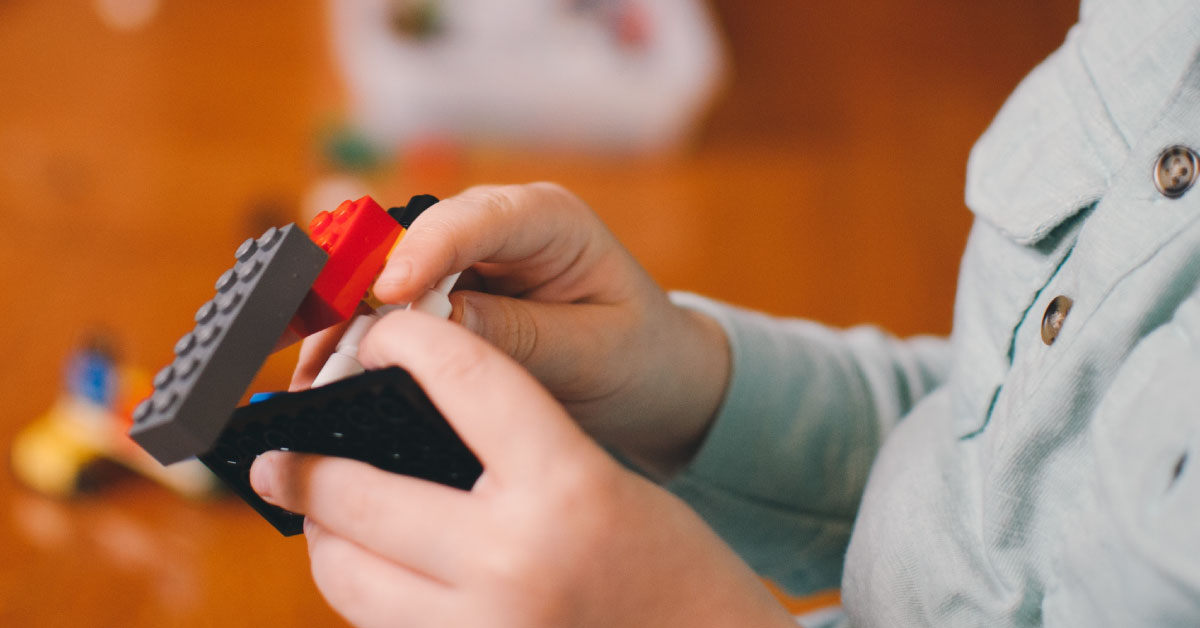This Holiday, Go Back to the Basics

It is that time of year when we enter the stores and see attractive product displays, and then are bombarded with emails and other advertising promoting the latest and greatest toy that your child or grandchild must have if they are to be successful someday. Increasingly, our society views toys as an important contributor to a child’s development of life skills that lead to success later in school, and subsequently in life. With this perception, the pressure to select the “most educational toy” can be high.
It is true that the use of toys in child’s play may promote their development in a variety of ways. Playing with push and pull toys helps children grow confidence in walking, while time spent with blocks and puzzles aids their ability to use the small muscles in the hands to manipulate objects and increase their spatial awareness. Participation in games develops communication and thinking skills, and artistic talents and imagination are stimulated with activities such as drawing and play with dolls and action figures.
Recent trends have led to many traditional toys being replaced with electronic versions of the toy or game. Often virtual and electronic games and toys are marketed to create the perception that they are of greater educational value. However, not only are these perceptions unfounded, but according to a clinical report by the American Academy of Pediatrics Council on Early Childhood, they may lead to harm as they can decrease the amount and quality of social interactions critical to a child’s social development that occur normally when interacting with others during play.

The interactions that occur between a child and their caregiver during play are the most important and educational aspect of play, rather than the specific type of toy used for play. When a caregiver plays with a child as opposed to a child playing alone, valuable conversations occur leading to reciprocal “serve and return” exchanges. This means that when the child says something (“serves”), the caregiver responds (“return”). Shared play with caregivers also provides a framework on which more challenging concepts can be introduced and the child can build higher thinking skills.
Still, all caregivers want their children to have something to unwrap from under the tree that can be fun and safe. What should be considered?
First, all toys should be appropriate for the abilities and age of the child. When purchasing, adhere to the age range listed on the toy. For example, toys with small parts are not appropriate for infants and young children as they can be a choking hazard.
Be aware of dangers associated with high-powered magnets and button batteries. Magnets and button batteries, when swallowed, can lead to serious gastrointestinal complications including bleeding and have even led to deaths in children.
If purchasing any “toy” that can be ridden, do not forget a helmet to be worn when riding. According to the Centers for Disease Control and Prevention, wearing the right helmet per activity that fits correctly is a must to aid in decreasing the risk of a serious skull or brain injury.
Ensure that the toy has all ribbons and strings removed before giving to a child. If giving a pull toy, be careful that the string is less than 12 inches long. Strings longer than 12 inches and loose ribbons can create risk for strangulation.
If giving an electronic toy or tablet, establish rules for the device in the beginning. Remember that in children younger than 2 years old, media use should be limited to interaction via facetime or other such platforms. For children 2-5 years of age, use should be less than an hour per day with content that is interactive, educational and non-violent.
Most importantly, as you spend time shopping this holiday season, remember it is not the coolest electronic gadget, the most expensive toy, nor the toy marketed this season as the “one of greatest educational value” that makes the biggest difference in their lives. Rather, it is the time you spend interacting with them while they play that makes the difference. Let’s go back to the basics.
Tammy Camp, M.D., is a pediatrician at Texas Tech Physicians and a professor of pediatrics at Texas Tech University Health Sciences Center.
Related Stories
Making Mental Health a Priority in the New Year
Sarah Mallard Wakefield, M.D., a psychiatrist with Texas Tech Physicians, talks about strategies to combat widespread and growing anxiety.
TTUHSC Dean to be Inducted into the National Academies of Practice as Distinguished Fellow
Gerard E. Carrino, Ph.D., MPH, dean of the TTUHSC Julia Jones Matthews School of Population and Public Health, will be inducted into the National Academies of Practice (NAP) as a Distinguished Fellow of the Public Health Academy.
TTUHSC School of Nursing Celebrates 10-Year Anniversary of the Abilene Community Health Center
The TTUHSC School of Nursing hosted a 10-Year Anniversary Celebration and Open House for the Abilene Community Health Center. The center is one of 71 Federally Qualified Health Centers (FQHCs) in Texas according to the Texas Health and Human Services.
Recent Stories
Making Mental Health a Priority in the New Year
Sarah Mallard Wakefield, M.D., a psychiatrist with Texas Tech Physicians, talks about strategies to combat widespread and growing anxiety.
TTUHSC Cancer Researcher Honored by National Academy of Inventors
C. Patrick Reynolds, M.D., Ph.D., director of the School of Medicine Pediatric Cancer Research Center at TTUHSC, has dedicated his life as a researcher to developing treatments for childhood cancers.
TTUHSC School of Nursing Celebrates 10 Years of the Veteran to BSN Program
The TTUHSC School of Nursing recognized the 10-year anniversary of the Veteran to Bachelor of Science in Nursing (VBSN) program during the fall 2025 commencement ceremonies held Dec. 13 in Lubbock, Texas.
